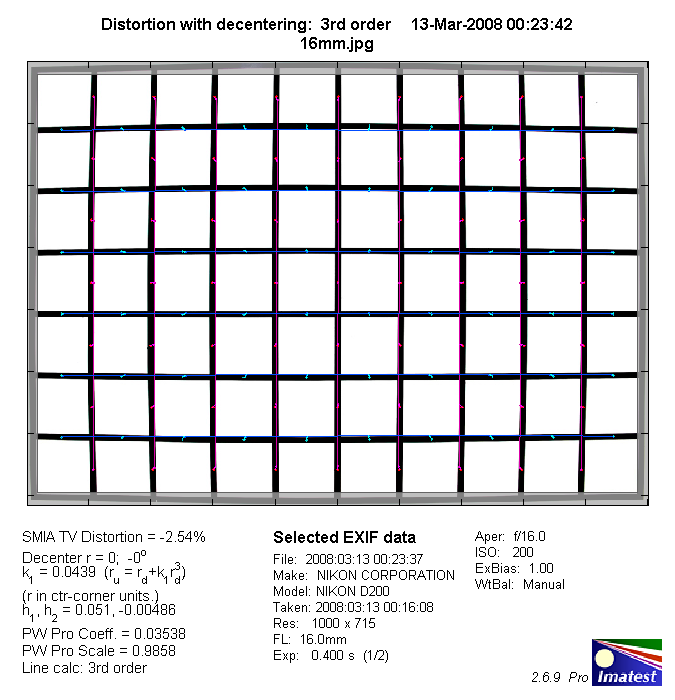|
Page 2 of 3

Distortion
Long range zoom lenses tend to suffer from rather hefty distortions but the AF-S 16-85mm VR does a comparatively good job here. Unsurprisingly it shows relatively pronounced barrel distortion at 16mm (~2.5%) but we've seen worse things here. At 24mm the opposing forces even out whereas you get moderate pincushion distortion (~1%) beyond. All-in-all a good performance for a standard zoom lenses here.
|
Move the mouse cursor over the focal length text marks below to observe the respective distortion
|
| 16mm |
24mm |
35mm |
50mm |
85mm |
|

|
The chart above has a real-world size of about 120x80cm.
Vignetting
The AF-S 16-85mm DX is a reduced image circle (APS-C) lens so vignetting is naturally more pronounced compared to full format lenses used on DX DSLRs. Typical for such standard zoom lenses the vignetting is worst at the wide end (16mm @ f/3.5) where it reaches 1.3EV so stopping down to f/5.6 is advisable here. The situation eases significantly beyond the wide end.

MTF (resolution)
The lens delivers excellent resolution in the image center in the lower focal range. At 50mm and 85mm, the resolution drop a little, but is still high in the very good range on our scale and excellent stopped down to f/8.
However, at 16mm the lens suffers from some field curvature in the extreme corners and there's also a bit of a focus shift when stopping down (residual spherical aberrations)
The border show very good sharpness at any tested focal length and aperture. This is also true for the corners, except for the extreme ends of the focal range. At 16mm the sharpness is good here wide open and increases to very good figures stopped down to f/8. At 85mm, the corners show even less sharpness, only fair wide open and only good stopped down.
Please note that the MTF results are not directly comparable across the different systems!
Below is a simplified summary of the formal findings. The chart shows line widths per picture height (LW/PH) which can be taken as a measure for sharpness.
If you want to know more about the MTF50 figures you may check out the corresponding Imatest Explanations

Chromatic Aberrations (CAs)
CAs (color shadows at harsh contrast transitions) are pretty well controlled for most of the middle range but somewhat more pronounced at the extreme ends reaching up to 1.6px at the image borders. However, this is still quite decent for a standard zoom lens. Also note that CAs can easily be corrected in software or by the camera itself (most modern Nikon DSLRs remove CAs themselves if you shoot JPGs).

Bokeh
A 16-85mm f/3.5-5.6 is not really meant to be used in shallow depth-of-field situations - the slow max. aperture is simply not suitable for this. Naturally you can produce a shallow DOF by choosing a very close focus distance but that's pushing things a little.
Normally we do not specifically test the bokeh quality of slow lenses. However, the lens delivers mixed results depending on the focal length and it's worth to have a closer look at this issue.
At 85mm f/5.6 the bokeh (the quality of the out-of-focus blur) may not be something special here but it's acceptable both for highlights as well as regarding the general blur.
However, the situation changes rather dramatically when moving towards 50mm f/5:
The blur is quite busy here (shape shadows) and the outlining effect around highlights is plain terrible - almost similar to a mirror lens.
Regarding the typical applications for such a lens you shouldn't blow this out of proportions but it's something to keep in mind.
|